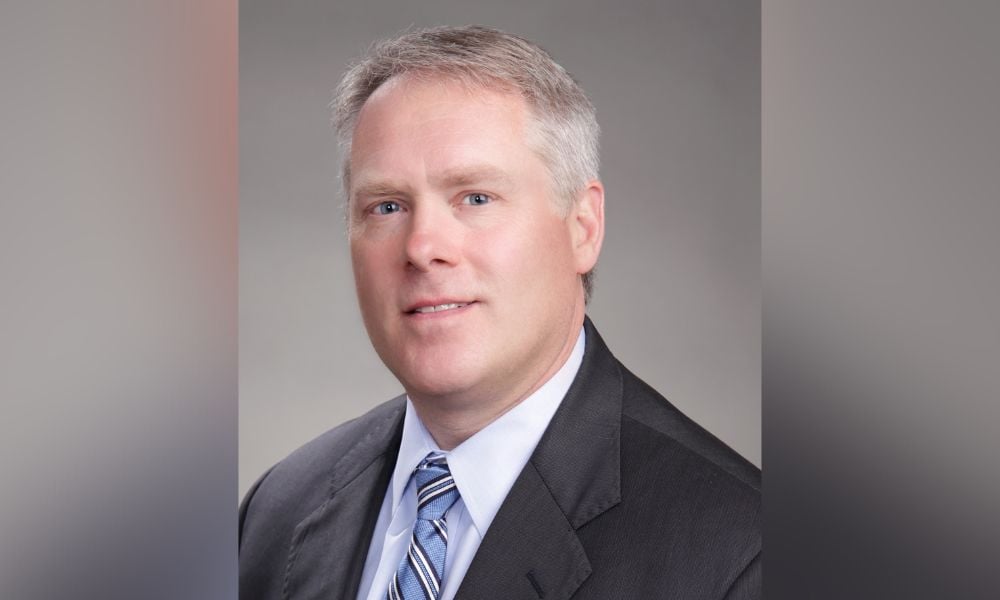Geoff Kelley, Global Head of Strategic Asset Allocation, Manulife Investment Management, says strategy has not changed

Sponsored by Manulife Investment Management, as of November 2022
Manulife Smart U.S. Dividend ETF (UDIV) and the Manulife Smart Dividend ETF (CDIV) have been touted by Manulife Investment Management for their abilities to provide a safe harbour when markets are in turmoil. Recently, that claim has been put to the test as world markets face the double-barreled threat of sharp inflation and aggressive interest rate hikes.
Both funds focus on trading in reliable dividend-paying stocks in the MSCI U.S. Index and the Canadian TSX Composite, and both are outperforming their respective indexes1.
“It actually plays into the hand of the fund,” says Geoff Kelley, Global Head of Strategic Asset Allocation within the firm's multi-asset solutions team.
Kelley explains that high dividend yield strategies have a shorter duration (the number of years of dividend payments it takes to recover the current price) so investors get more payments upfront to compensate for the cost of the securities. Higher interest tends to shorten the duration of the securities, which makes income-producing securities do better in rising rate environments when inflation is high.
“So, it's actually been a benefit to the strategy,” he says. “We've just continued to see income strategies do well. It hasn't changed what we were trying to do. We didn't suddenly decide to get even higher dividend yields or anything like that.”
In particular, UDIV has been enjoying relatively strong showing against the MSCI. Meanwhile, CDIV while not as robust, continues to outperform relative to the TSX Composite. While Kelley sees inflation lasting longer than was perhaps first anticipated, he also believes that the market has gotten used to the current reality.
As things ease, Kelley says the fact that the funds are actively managed positions them well to continue to thrive. Names in the funds tend to pay dividends over the long term and fund managers focus on payout ratios to ensure that the funds are not delivering too much income so that it's not sustainable over time.
“Value, momentum and quality are also factors that play into the names that we’ll own in the portfolio,” he says, likening the funds’ active management to laying out puzzle pieces. “We want to make sure all the puzzle pieces fit together in a coherent and diverse pattern. That makes sense from a total portfolio standpoint, in addition to providing you an attractive dividend.”
Because of the active managed nature of the funds and the unique modeling Manulife does to build these portfolios, both funds deviate significantly from some established benchmarks such as income and cap weighted benchmarks. “Our portfolio has a reasonable amount of tracking error, it has a reasonably high active share, which is what we're targeting,” Kelley says. “We want it to be distinguished from some of the established benchmarks.”
Another element of this activeness is how Manulife evolves its models over time. These are not static models. They morph as more research comes to light or more resources are added, bringing new ideas to the fore. “Those folks bring new ideas, new areas to explore and research, not just on factors, but on modeling techniques and a lot of things so that we'll continue to evolve,” Kelley says.
According to Kelley the models for both funds are largely the same. The only real difference is that in the U.S., the market is broad and there are more names to choose from, whereas Canada is a much smaller market. In UDIV’s case, there are 650 names in its universe, of which the fund owns 145. “In the U.S., we're looking in the large and mid-cap space and all of the names, for the most part, are liquid enough for us to feel comfortable investing in them,” he says. “If you look at the TSX Composite, not every name is liquid. So, we do have to put a liquidity adjustment and filter out the less liquid names.”
Both funds look for such measures as good margins, changes in margins over time, return on investments, return on equities, and debt to equity ratios. The funds also take into account factors such as dividend yield, payout ratios and dividend growth.
Kelley and his team consider a variety of companies and sectors, including REITs, utilities, financial services, and tech. Rebalancing is done quarterly with a target 10% turnover per quarter, but Kelley says that this target will fluctuate over time as the funds see more opportunities to improve the portfolios. You may, for example, see a greater willingness in one quarter to spend turnover budget on more alpha but then decrease in the next quarter depending on what opportunities present or don’t present themselves to enhance the portfolios.
These are funds that Kelley says suit aging investors and those nearing retirement. “Dividends are a significant portion of return over time,” he says. “There's a place in a portfolio, particularly of someone who is nearing retirement and can use the extra income to be kicked off without having to sell securities2.”
Important disclosures
1Year to date performance:
CDIV: -4.27%
S&P/TSX Composite Index: -6.19%
UDIV.B: 1.49%
S&P 500 Total Return Index (unhedged): -11.13%
2It is not possible to invest in indices
The views expressed are those of Manulife Investment Management and are subject to change as market and other conditions warrant. Information about a portfolio's holdings, asset allocation, or country diversification is historical and is no indication of future portfolio composition, which will vary. Please read the fund facts as well as the prospectus before investing. The indicated rates of return are the historical annual compounded total returns including changes in unit value and reinvestment of all distributions and does not take into account sales, redemption, distribution or optional charges or income taxes payable by any securityholder that would have reduced returns. Mutual funds are not guaranteed, their values change frequently and past performance may not be repeated. Past performance is not indicative of further returns. Certain research and information about specific holdings in the Fund, including any opinion, is based on various sources believed to be reliable. All overviews and commentary are for information purposes only and are not intended to provide specific financial, investment, tax, legal, accounting or other advice and should not be relied upon in that regard. This material was prepared solely for informational purposes, does not constitute an offer or an invitation by or on behalf of Manulife Investment Management to any person to buy or sell any security and is no indication of trading intent in any fund or account managed by Manulife Investment Management.
Manulife Funds are managed by Manulife Investment Management Limited (formerly named Manulife Asset Management Limited). Manulife Investment Management is a trade name of Manulife Investment Management Limited.
Commissions, management fees and expenses all may be associated with exchange traded funds (ETFs). Investment objectives, risks, fees, expenses, and other important information are contained in the ETF facts as well as the prospectus, please read before investing. ETFs are not guaranteed, their values change frequently, and past performance may not be repeated.
Manulife, Manulife Investment Management, the Stylized M Design, and Manulife Investment Management & Stylized M Design are trademarks of The Manufacturers Life Insurance Company and are used by it, and by its affiliates under license.



